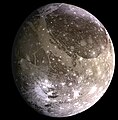चित्र:The Galilean satellites (the four largest moons of Jupiter).tif
नेविगेशन पर जाएँ
खोज पर जाएँ


पूर्वावलोकन का आकार TIF फ़ाइल: ८०० × २६२ पिक्सेल अन्य resolutions: ३२० × १०५ पिक्सेल | ६४० × २१० पिक्सेल ।
मूल फ़ाइल ((१,८३० × ६०० पिक्सेल, फ़ाइल का आकार: १.५१ MB, MIME प्रकार: image/tiff))
फ़ाइल का इतिहास
फ़ाइलका पुराना अवतरण देखने के लिये दिनांक/समय पर क्लिक करें।
| दिनांक/समय | अंगूठाकार प्रारूप | आकार | प्रयोक्ता | प्रतिक्रिया | |
|---|---|---|---|---|---|
| वर्तमान | १२:५४, २९ दिसम्बर २०११ | १,८३० × ६०० (१.५१ MB) | wikimediacommons>Prof. Professorson | {{Information |Description=This composite includes the four largest moons of en:Jupiter which are known as the Galilean satellites. The Galilean satellites were first seen by the Italian astronomer en:Galileo Galilei in |
फ़ाइल का उपयोग
निम्नलिखित पन्ने इस चित्र से जुडते हैं :




